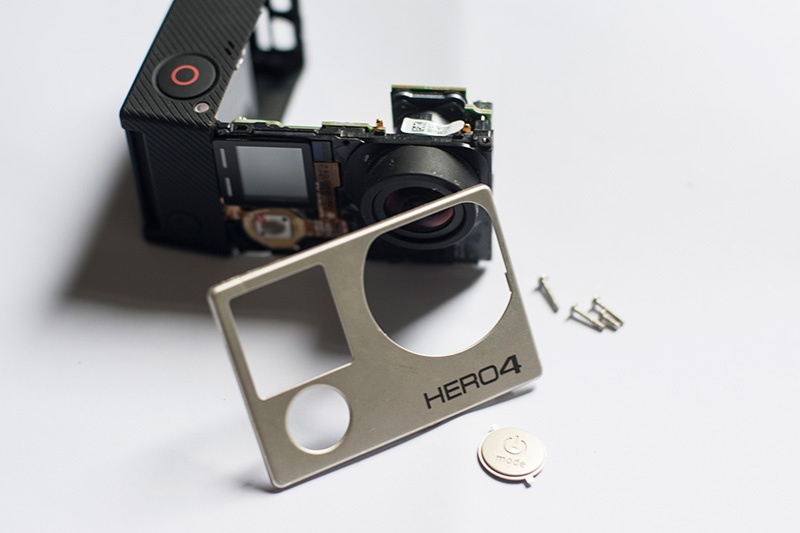View Your Knowledge Assets Through a Wider Lens

GoPro has been called “a victim of its own brilliance.” [1] In 2002, the company entered the marketplace as one of those true rarities – a product so innovative that it created a market. Fast-forward to 2016. The company is barely breathing, due in part to heavy competition from lower-cost market entries from companies like HTC and Xiaomi that hit the international marketplace and surpassed GoPro sales in less than 12 months. The damage is also coming from the fact that the company has neglected demands from buyers hungry for simplicity and instant gratification – like that of the more consumer-friendly options like the iPhone, laptops, and even the Blackberry.
Market analysts have proposed that GoPro could have competed on cost and market appeal if it had focused on innovating with those realities in mind. Instead, they say the company was, “likely distracted, focusing lots of energy and resources on turning itself into a full-fledged media company.” [2] Going into the 2016 holiday season, GoPro is sitting on massive excess inventory and a stock price that is less than a third of what it had been at its peak. What can we learn from this precarious situation?
Data and intelligence are commodities
Access to information is the one thing that every Knowledge Era organization has in spades. Data is prolific to the point of being a commodity. And as with any commodity, there is the risk of others using it to get ahead, if the organization isn’t protecting and employing its resources properly.
Porter’s Five Factors measurement (threat of new entry, buyer power, substitution, supplier power, and competitive rivalry) helps to prove the point. GoPro rapidly went from visionary to commodity because its idea was powerful but not entirely proprietary, and others identified productive ways to join – and capture – the market through attractive substitutes. The company had access to the same data but neglected to leverage it to sustainably secure its first-to-market advantage.
Creating unique financial value begins with understanding your assets and protecting them
The increasing accessibility of knowledge means that organizations need to think more broadly about the implications of data they are gathering. It’s no longer enough to pull from the ‘proper’ intelligence sources. As we have seen, players across the global marketplace may have the capacity to out-produce, out-innovate, out-target, or underprice based on the data available to everyone. Everyone has the ability to fish from the same pools.
With that in mind, you should treat organizational knowledge like any asset worthy of protection:
- Have a clear plan for how to generate unique intelligence and value
- Consider how knowledge will shape goods and services
- Understand what your unique knowledge is and work to protect it
Continue to look beyond the current tangible uses of your information to consider new ways to leverage data to enhance offerings and presence. That effort requires taking the time to evaluate historic, current, and potential value propositions in light of known and possible opportunities and threats. This process is not static. Rather, to be successful it must be ingrained in the corporate culture and done iteratively and continuously.
The standard notion of protection is shortsighted
We generally think of threats to data or knowledge as coming from malicious hackers or individuals with a calculated disregard for authority, pranksters, knowledge-seekers who penetrate protected data reserves to learn more about systems, or even those who see unraveling private data as a means to force progress.[3] Limiting your sense of knowledge protection to outside sources like these is a flawed strategy. Equating “data” with “knowledge” is a common misconception, and viewing threats to data and knowledge in the same light for the purpose of developing a protection strategy is outdated and will leave your vulnerable. In the case of Go Pro, their downfall was not in failing to protect the data of their intellectual property, it was in failing to incisively use the unique knowledge they had to read market demand drivers. In short, they failed to leverage their superior knowledge to protect their value proposition.
Protection efforts should endeavor to safeguard what is inherently valuable and important across your organization, prevent harm, and act as comprehensive preservation measures. Security is no longer reserved for a compartmentalized, assigned team – it is a cross-organizational, internally and externally facing endeavor. And protection is no longer reserved for valuations, working capital hurdles, deals – it encompasses every team and endeavor, as well as the tangible and intangible assets that make you unique.
If we think about protection in this manner, we can see how and why all aspects of organizations need to be encompassed. Your knowledge resources, certainly – but also your workforce, property and equipment, and reputation. These comprise your organization’s value proposition. In the absence of proactive and comprehensive efforts to protect it, you leave yourself open to digital, competitive, and marketplace threats that (as GoPro learned so well) can damage the brand and reputation irreparably.
Proactively safeguarding your knowledge assets is a priority responsibility for every team and individual within the organization. Each one should understand what is of greatest value to the organization as a whole, what the vulnerabilities are in those assets, and what measures should be in place to mitigate the numerous inevitable risks. This mentality and approach may require proactive transformation. But without that focus, your current assets and your future innovations essentially are laid bare to any number of forces that will mute their possibility.
It’s time for a call to action for foresight and a rallying cry to protect your most valuable asset – knowledge.
{{cta(‘befa9ff3-80a5-4a6c-b483-9daadb37b099’)}}
[1] What the Hell Happened to GoPro? The Street, November 2015
[2] What Happened to GoPro? Marketplace, November 2016
[3] The Hacker Hacked, Aeon
- Categories
- Leadership
- Strategic Planning


 About the Authors
About the Authors